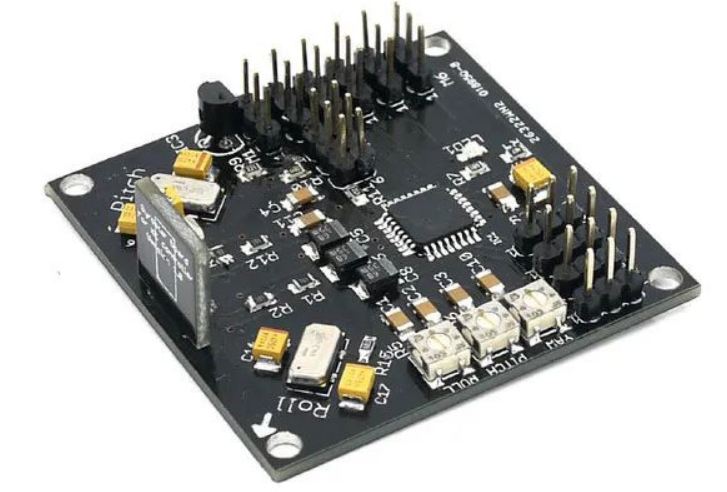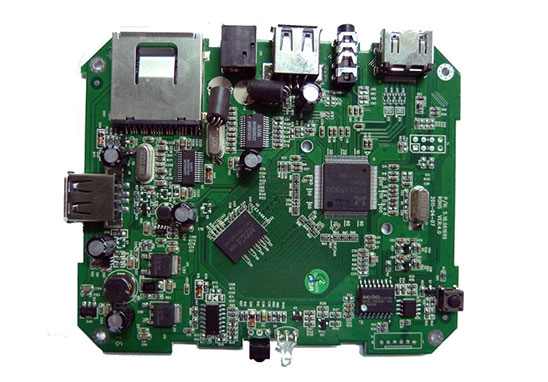
The main feature of electroplated copper plating processing technology used by PCB manufacturers to produce multilayer impedance circuit boards is the blind buried holes formed in the multilayer PCB board with "core board". These micro-conduction holes should realize the electrical interconnection between layers through the perforation and copper plating. The most critical aspect of metallization and electroplating is the entry and replacement of electroplating solution.
Circuit board manufacturers manufacture multi-layer PCB board is coated or laminated medium layer (or coated resin copper foil) on the surface of the "core board" and form a micro through hole. These micro through holes formed by layering on the "core plate" are produced by photoinduced, plasma, laser and sandblasting (a mechanical method, including CNC drilling method not introduced). The micro-conduction holes of multilayer PCB boards are metallized by holes and copper plating to realize the electrical interconnection between PCB layers. This section mainly introduces the characteristics and requirements of micro through holes in PCB board during perforation and electroplating.
For through the hole, if it is vertical perforation plating, PCB manufacturers in the plate clamp (or hanging) swing, vibration, plating solution mixing or jet flow method to make PCB in the two plate surface between the hydraulic pressure difference, the hydraulic pressure difference will force the plating solution into the hole and drive away the gas in the hole and filled in the hole, for the high thickness diameter ratio (thickness diameter ratio: The ratio of the thickness of the dielectric layer to the micro-conduction aperture), the existence of this hydraulic difference is more important, and then perforation or plating. In the pore plating, all the Cu2+ ions in the bath are consumed, so the pore bath Cu2+ concentration is lower and lower, the efficiency of pore plating or electroplating will be smaller and smaller. In addition to the effect of plating fluid through the hole (such as can be regarded as "laminar flow" phenomenon) and the uneven distribution of current density (the current density in the hole is much lower than the current density of the plate), therefore, the coating thickness at the center of the hole is always lower than the coating thickness at the plate. In order to reduce the difference in the thickness of the coating, the most fundamental method is: one is to improve the flux of the bath in the hole or the exchange times of the bath in the hole per unit time (assuming that the bath is replaced again and again, actually more complex, but this assumption is illustrative); Two is to improve the current density in the hole, which is obviously difficult, or is not feasible, because, improve the current density of the bath in the hole, is bound to improve the current density of the surface, so that, instead, the hole at the center of the coating thickness and the thickness of the plate between the greater difference; Three is to reduce the plating current density and plating bath Cu2+ ion concentration, at the same time improve the bath bath flux (or bath exchange times), in this way, can reduce the surface between the plating bath Cu2+ ion concentration difference between the plate and the hole (refers to the partial consumption of Cu2+ and the plating bath replacement of the difference brought by Cu2+ concentration difference), This measure and method can improve the thickness difference between the plate surface coating and the hole coating (center), but often at the cost of PCB productivity (output), which is not desirable. The fourth is the use of pulse electroplating method, according to different height thickness diameter ratio of micro through the hole, using the corresponding pulse current electroplating method {can obviously improve the PCB surface coating and hole coating thickness difference, even can achieve the same coating thickness. Can these measures be applied to the perforation electroplating of micro through holes in multilayer PCB circuit boards?

As mentioned above, the perforation plating of microconduction holes in multilayer circuit boards is carried out in blind holes. When the hole depth of blind holes is small or the thickness to diameter ratio is small, practice has shown that the above four electroplating measures can get good results. However, when the depth of the blind hole is high or the thickness to diameter ratio is large, how reliable is the perforation plating of the micro-through hole? In other words, how to control the proper depth or thickness to diameter ratio of the blind hole of the multilayer circuit board?
There is no detailed report on the application of horizontal perforation plating to fabricate micro-perforation holes in multilayer PCB boards, but one can imagine that reliable electrical interconnection should be obtained by horizontal perforation plating for PCB circuit boards with low thickness to diameter ratio. And for the larger thickness to diameter ratio of the blind through hole, the blind through hole on the lower surface of the multilayer circuit board is difficult to drive away the gas in the hole, even the bath into the hole are difficult, not to mention the bath in the hole exchange problem, unless regularly turn the surface.
In summary, according to the basic characteristics and principles of perforation and electroplating processing of multilayer PCB board above, we can conclude that the blind buried pilot holes of multilayer PCB board are processed by horizontal perforation electroplating (especially those with large thickness to diameter ratio, such as thickness to diameter ratio > 0.8) is far less than the effect of vertical perforation plating processing.









